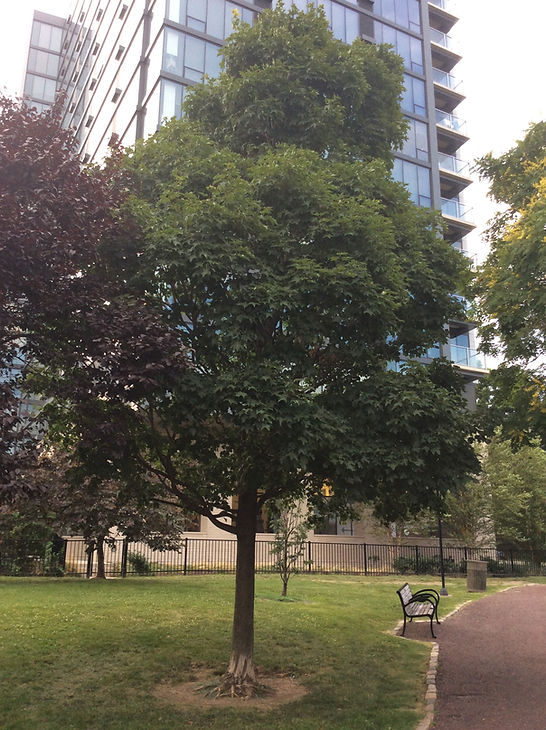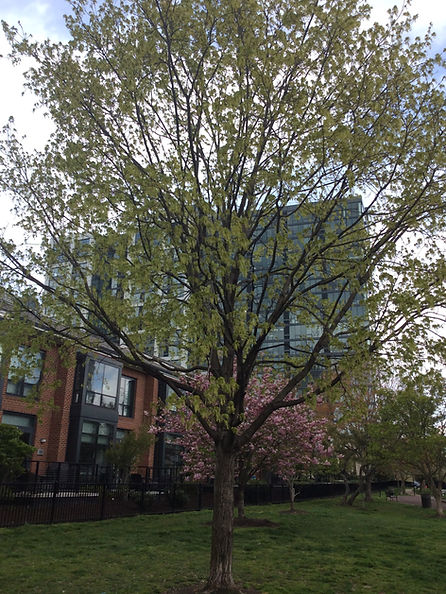top of page
The Park has one sugar maple in each of the the northwest and northeast triangles. Sugar maples are readily recognized by their leaves, and well known as the source of sap for making sugary maple syrup for your pancakes. See Wikipedia entry here.
The sugar maple is a landscape standout. Medium to dark-green leaves turn yellow, burnt orange, or red in the fall. It tolerates shade, and likes a well-drained, moderately moist and fertile soil.

Northeast triangle sugar maple in July.
Sugar Maple factoids:
-
The fruits of the sugar maple are called samaras and look like those of the red maple
-
To make 1 gallon of maple syrup you have to boil down 30-40 gallons of maple sap. Sugar maples in the southern extreme of their growth zone, like in Philadelphia, don't produce much sap. Colder Vermont rules on maple syrup production!
-
The maple leaf on the flag of Canada most closely resembles the sugar maple leaf
-
In autumn, yellows, oranges, and reds fill the canopy of this tree.

Branch from this tree on April 15
Sugar maples have separate male and female flowers on the same tree, and are therefore termed monoecious (see discussion here on the Red Maple page). The male or staminate flowers have yellow anthers loaded with pollen, best seen in the lower left in this photo. The female or carpellate flowers are those with the darker tong-like protrusions, these being split carpels. The female flowers will produce the double-winged fruit called samaras, that kids know as "helicopters."
For more on sugar maple flowers see outside link here.

Second sugar maple in the northeast triangle in July
.png)

There are two sugar maples and two red maples in the Park. Sugar maple leaf on left, with pointed leaf tips; red maple leaf on right, with more rounded leaf tips.
.png)
Sugar maple leaf on top, flag of Canada with stylized sugar maple leaf on bottom

Sugar maple in northwest triangle turning a light green in mid-April, not with leaves but with flowers.

Probable squirrel damage.
Same tree in June of 2025 showing a branch that has been girdled (the bark has been stripped circumferentially). This kills the branch distal to the girdling. There are no leaves on this branch.
Botany 101 Bonus
Let's talk leaves some more. Trees and other plants have the amazing ability to make sugar out of carbon dioxide and water using the energy from sunlight. That's right: air plus water equals food! This photosynthetic activity takes place in cellular structures called chloroplasts, mediated by a green pigment molecule called chlorophyll. The chlorophyll degrades in autumn, revealing other molecules of yellow, orange, and red colors. The amino acids from this breakdown are stored in the tree and recycled as the building blocks of proteins in the spring.
A project for the next generation of scientists is to invent an artificial leaf, a device that uses plentiful sunshine to convert the increasing levels of carbon dioxide in the air into food. Or, we can just plant more trees!
bottom of page


